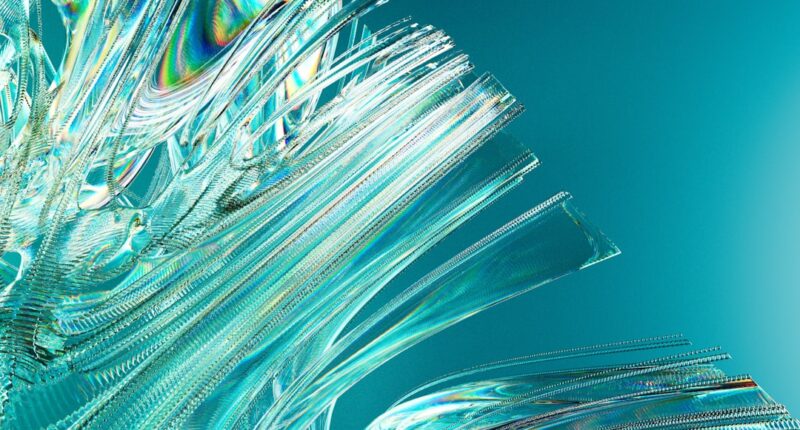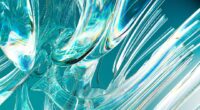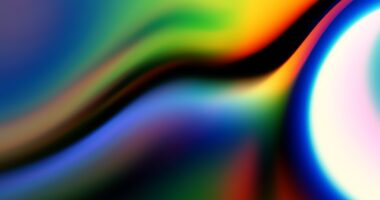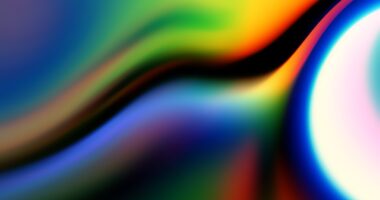In recent years, the digital landscape has witnessed a seismic shift with the emergence of Non-Fungible Tokens (NFTs), a revolutionary concept that has transformed the way we perceive ownership and value in the digital realm. NFTs are unique digital assets verified using blockchain technology, allowing artists, designers, and creators to tokenize their work and sell it in a decentralized marketplace. This innovation has opened up new avenues for graphic designers, enabling them to showcase their creativity in ways that were previously unimaginable.
As the NFT market continues to expand, graphic design has become an integral part of this ecosystem, serving as the visual language that communicates the essence of these digital collectibles. The intersection of NFTs and graphic design is not merely a trend; it represents a fundamental shift in how art is created, distributed, and consumed. Designers are now tasked with not only creating visually appealing works but also ensuring that their designs resonate with potential buyers in a crowded marketplace.
The unique nature of NFTs—where each token is distinct and carries its own value—demands a fresh approach to design that emphasizes originality and innovation. As we delve deeper into this dynamic relationship, it becomes clear that graphic design plays a pivotal role in shaping the identity of NFTs and influencing their marketability.
Key Takeaways
- NFTs are a new and exciting way for graphic designers to showcase their work and connect with a global audience.
- Visual appeal is crucial in NFTs as it can significantly impact the value and desirability of digital collectibles.
- When designing for NFTs, it’s important to consider factors such as file format, resolution, and authenticity to ensure the best possible outcome.
- The intersection of art and technology in NFTs opens up endless possibilities for creative expression and innovation.
- Branding and identity play a key role in the success of NFTs, as they help establish trust and recognition in a crowded marketplace.
The Importance of Visual Appeal in NFTs
The Deciding Factor in a Crowded Marketplace
In the world of NFTs, visual appeal is crucial, as countless digital assets compete for attention in an ever-expanding marketplace. The aesthetic quality of a design can significantly impact its desirability and perceived value. In an environment where buyers are often inundated with options, a striking visual presentation can be the deciding factor that compels someone to invest in a particular piece.
Crafting Captivating Visuals
Graphic designers must harness their skills to create captivating visuals that not only attract attention but also convey the underlying narrative or emotion behind the work. This requires a deep understanding of color theory, composition, and typography, as well as an awareness of current design trends that resonate with audiences.
Context and Storytelling in NFT Design
The visual appeal of an NFT extends beyond its immediate aesthetics; it also encompasses the broader context in which the artwork exists. Designers must consider how their creations fit within the larger narrative of the NFT space, including themes of digital ownership, community engagement, and cultural relevance. A well-designed NFT can evoke emotions, spark conversations, and foster connections among collectors and enthusiasts. As such, graphic designers are not just artists; they are storytellers who use visual elements to communicate complex ideas and emotions in a way that resonates with diverse audiences.
Designing for Digital Collectibles: Tips and Best Practices

Creating compelling designs for digital collectibles requires a strategic approach that balances creativity with market awareness. One essential tip for graphic designers is to stay informed about the latest trends in both art and technology. The NFT landscape is constantly evolving, with new platforms, tools, and styles emerging regularly.
By keeping abreast of these developments, designers can ensure that their work remains relevant and appealing to potential buyers. Additionally, understanding the preferences of target audiences can help designers tailor their creations to meet specific demands, whether that involves adopting minimalist aesthetics or embracing bold, experimental styles. Another best practice is to prioritize originality while maintaining a cohesive brand identity.
In a saturated market, standing out is crucial; therefore, designers should strive to develop a unique visual language that reflects their artistic vision while also resonating with collectors. This could involve experimenting with different mediums, such as 3D modeling or animation, to create dynamic and engaging pieces. Furthermore, establishing a recognizable brand identity can enhance a designer’s credibility and attract a loyal following.
By consistently delivering high-quality work that aligns with their brand values, designers can cultivate a strong presence in the NFT space and build lasting relationships with collectors.
Exploring the Intersection of Art and Technology in NFTs
The rise of NFTs has sparked a fascinating dialogue between art and technology, challenging traditional notions of creativity and ownership. At its core, this intersection invites artists and designers to explore new possibilities for expression through innovative tools and platforms. For instance, the integration of augmented reality (AR) and virtual reality (VR) technologies into NFT art allows creators to push the boundaries of their work, offering immersive experiences that engage viewers on multiple levels.
This fusion of art and technology not only enhances the aesthetic experience but also redefines how audiences interact with digital art. Moreover, the technological underpinnings of NFTs—particularly blockchain—have introduced new paradigms for artists regarding provenance and authenticity. In an era where digital art can be easily replicated, NFTs provide a mechanism for verifying ownership and originality.
This shift empowers artists by granting them greater control over their work and enabling them to monetize their creations more effectively. As designers navigate this evolving landscape, they must embrace both artistic innovation and technological advancements to create compelling NFTs that resonate with collectors while also reflecting the transformative potential of this new medium.
Understanding the Role of Branding and Identity in NFTs
Branding plays a crucial role in the success of NFTs, as it helps establish a designer’s identity within a competitive marketplace. A strong brand not only differentiates an artist’s work from others but also fosters trust and recognition among collectors. Graphic designers must carefully consider how they present themselves and their creations, from their online presence to the narratives they craft around their work.
This includes developing a consistent visual style that reflects their artistic vision while also resonating with their target audience. By cultivating a recognizable brand identity, designers can enhance their visibility in the NFT space and attract potential buyers who align with their aesthetic sensibilities. Furthermore, branding extends beyond mere visuals; it encompasses the values and stories behind an artist’s work.
In an age where consumers increasingly seek authenticity and connection, designers must articulate their creative journeys and motivations clearly. This narrative can be woven into marketing materials, social media posts, and even the descriptions accompanying each NFT listing. By sharing personal stories or insights into their creative processes, designers can forge deeper connections with collectors who appreciate not only the artwork itself but also the context in which it was created.
Ultimately, effective branding serves as a bridge between artists and audiences, fostering community engagement and loyalty within the NFT ecosystem.
Navigating the Unique Challenges of Designing for NFTs

Designing for NFTs presents unique challenges that require graphic designers to adapt their approaches to meet the demands of this evolving medium. One significant challenge is ensuring compatibility across various platforms and devices. Unlike traditional art forms that exist in physical spaces, NFTs are viewed on screens of varying sizes and resolutions.
Designers must consider how their work will translate across different environments while maintaining its visual integrity. This may involve optimizing file formats or experimenting with responsive design techniques to ensure that each piece retains its impact regardless of where it is displayed. Another challenge lies in addressing issues related to copyright and intellectual property within the NFT space.
As digital art becomes increasingly commodified through tokenization, questions surrounding ownership rights and reproduction arise. Designers must navigate these complexities by clearly defining the terms of use for their work and understanding how blockchain technology impacts copyright enforcement. Additionally, fostering transparency regarding licensing agreements can help build trust with collectors while protecting artists’ rights.
By proactively addressing these challenges, graphic designers can position themselves as informed creators who are equipped to thrive in the dynamic world of NFTs.
The Future of Graphic Design in the NFT Space
As we look ahead to the future of graphic design within the NFT space, it is evident that this intersection will continue to evolve in exciting ways. The ongoing advancements in technology—such as artificial intelligence (AI), machine learning, and immersive experiences—will undoubtedly shape how designers create and present their work. For instance, AI-generated art has already begun to make waves in the NFT market, prompting discussions about authorship and creativity in an age where machines can produce visually stunning pieces.
Graphic designers will need to embrace these innovations while remaining true to their artistic identities, finding ways to integrate technology into their creative processes without compromising their unique voices. Moreover, as the NFT market matures, we may witness a shift toward greater collaboration between artists, designers, technologists, and collectors. This collaborative spirit could lead to new forms of artistic expression that transcend traditional boundaries while fostering community engagement within the NFT ecosystem.
Designers may find themselves working alongside developers to create interactive experiences or partnering with musicians to produce multimedia projects that blur the lines between different art forms. Ultimately, the future of graphic design in the NFT space holds immense potential for innovation and creativity as artists continue to explore new frontiers in this rapidly evolving landscape.
FAQs
What is NFT?
NFT stands for non-fungible token, which is a digital asset that represents ownership or proof of authenticity of a unique item or piece of content, such as artwork, videos, music, and more, using blockchain technology.
What is the role of graphic design in the NFT space?
Graphic design plays a crucial role in the NFT space as it is essential for creating visually appealing and unique digital artwork, which is then tokenized as NFTs. Designers are responsible for creating eye-catching and innovative digital assets that can be bought, sold, and traded as NFTs.
How can graphic designers get involved in the NFT space?
Graphic designers can get involved in the NFT space by creating digital artwork and designs that can be tokenized as NFTs. They can also collaborate with NFT platforms, marketplaces, and collectors to showcase and sell their work in the NFT space.
What are some insights for designers looking to enter the NFT space?
Designers looking to enter the NFT space should focus on creating original and high-quality digital artwork that stands out in the competitive NFT market. They should also familiarize themselves with blockchain technology, NFT platforms, and market trends to effectively navigate the NFT space.





